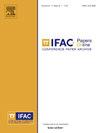Real-Time Capable Transient H2 Partial Pressure Model for Proton Exchange Membrane Fuel Cell Systems
Q3 Engineering
引用次数: 0
Abstract
Fuel cell electric vehicles hold a significant promise for reducing the carbon footprint in the automotive sector by leveraging H2 as a clean fuel source. Maintaining a consistent H2 supply to the fuel cell system is vital. N2 crossover can lead to an inert gas built-up on the H2 supply side, adversely affecting fuel cell performance and durability. Through purging, gases are released, and a N2 built-up in the H2 supply system can be prevented, yet this also leads to fuel loss. This fuel loss can be minimized by keeping an optimal N2 molar fraction. We developed a dynamic model for effectively designing, controlling, and diagnosing fuel cell systems by predicting the N2 molar fraction in the H2 supply. This model considers factors such as N2 distribution throughout the fuel cell stack, N2 crossover, and the purge process. The model is simplified to a differential equation of first order and solved using the explicit Euler method at a typical automotive time step of 0.01s. The proposed model is validated by a H2 measurement in a fuel cell system with passive recirculation.
质子交换膜燃料电池系统的实时瞬时H2分压模型
燃料电池电动汽车通过利用氢气作为清洁燃料来源,在减少汽车行业的碳足迹方面具有重要的前景。维持燃料电池系统持续的氢气供应至关重要。N2交叉会导致惰性气体积聚在H2供应侧,对燃料电池的性能和耐用性产生不利影响。通过吹扫,气体被释放,可以防止H2供应系统中积聚的N2,但这也会导致燃料损失。这种燃料损失可以通过保持最佳的N2摩尔分数来最小化。我们开发了一个动态模型,通过预测H2供应中的N2摩尔分数来有效地设计、控制和诊断燃料电池系统。该模型考虑了N2在整个燃料电池堆中的分布、N2交叉和吹扫过程等因素。将模型简化为一阶微分方程,采用显式欧拉法在典型的汽车时间步长为0.01s时求解。通过对无源再循环燃料电池系统H2的测量,验证了该模型的有效性。
本文章由计算机程序翻译,如有差异,请以英文原文为准。
求助全文
约1分钟内获得全文
求助全文
来源期刊

IFAC-PapersOnLine
Engineering-Control and Systems Engineering
CiteScore
1.70
自引率
0.00%
发文量
1122
期刊介绍:
All papers from IFAC meetings are published, in partnership with Elsevier, the IFAC Publisher, in theIFAC-PapersOnLine proceedings series hosted at the ScienceDirect web service. This series includes papers previously published in the IFAC website.The main features of the IFAC-PapersOnLine series are: -Online archive including papers from IFAC Symposia, Congresses, Conferences, and most Workshops. -All papers accepted at the meeting are published in PDF format - searchable and citable. -All papers published on the web site can be cited using the IFAC PapersOnLine ISSN and the individual paper DOI (Digital Object Identifier). The site is Open Access in nature - no charge is made to individuals for reading or downloading. Copyright of all papers belongs to IFAC and must be referenced if derivative journal papers are produced from the conference papers. All papers published in IFAC-PapersOnLine have undergone a peer review selection process according to the IFAC rules.
 求助内容:
求助内容: 应助结果提醒方式:
应助结果提醒方式:


